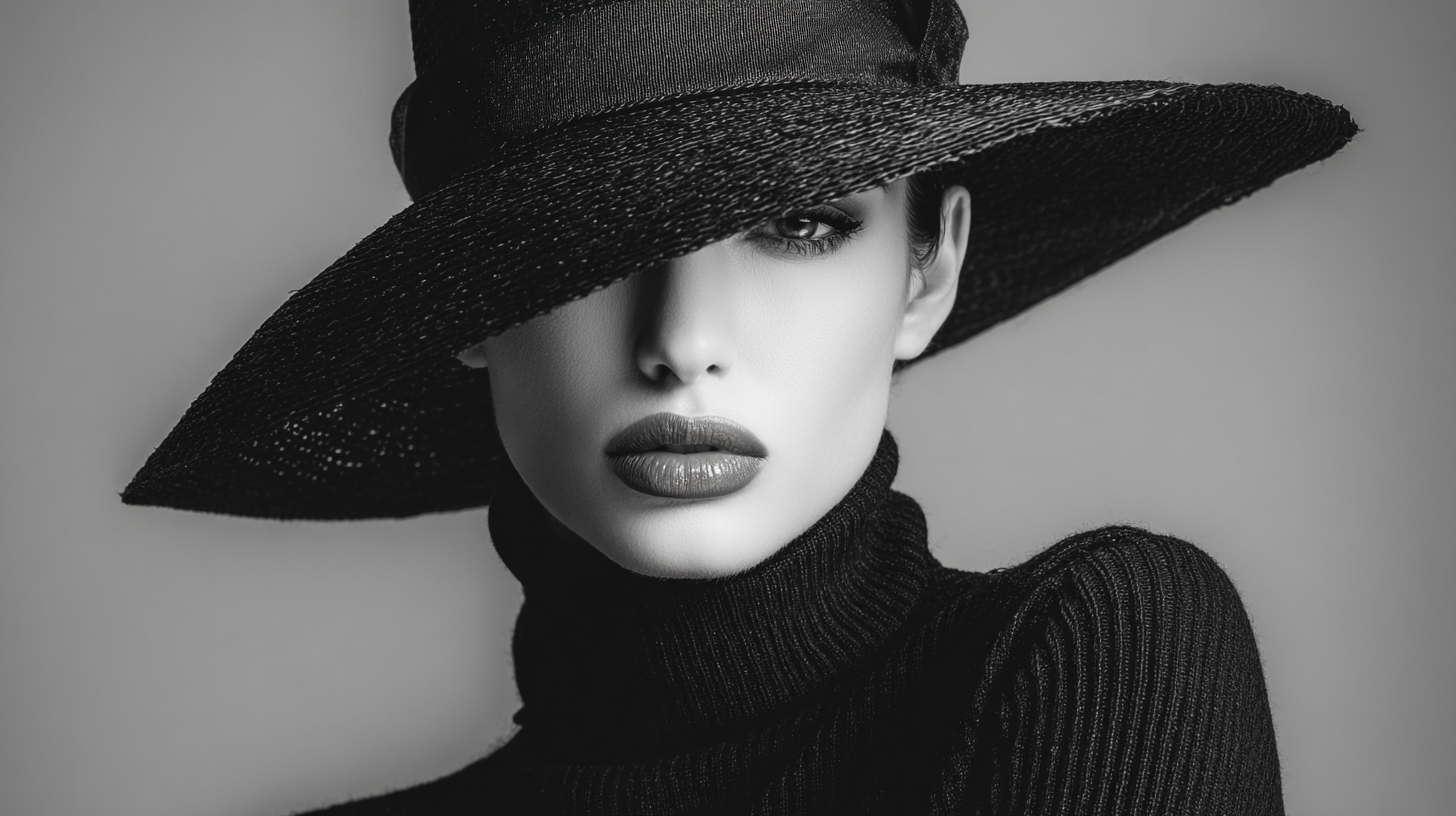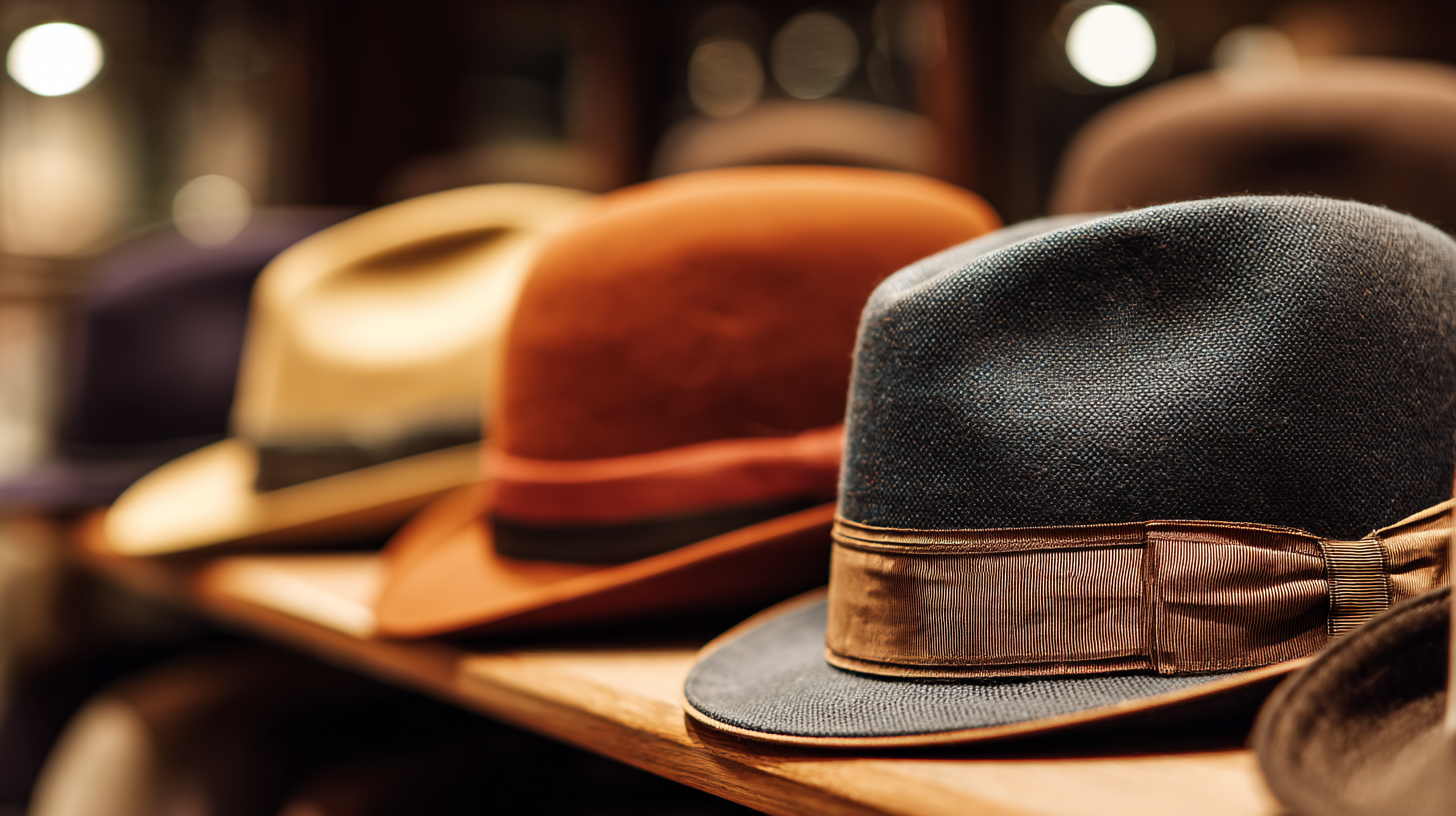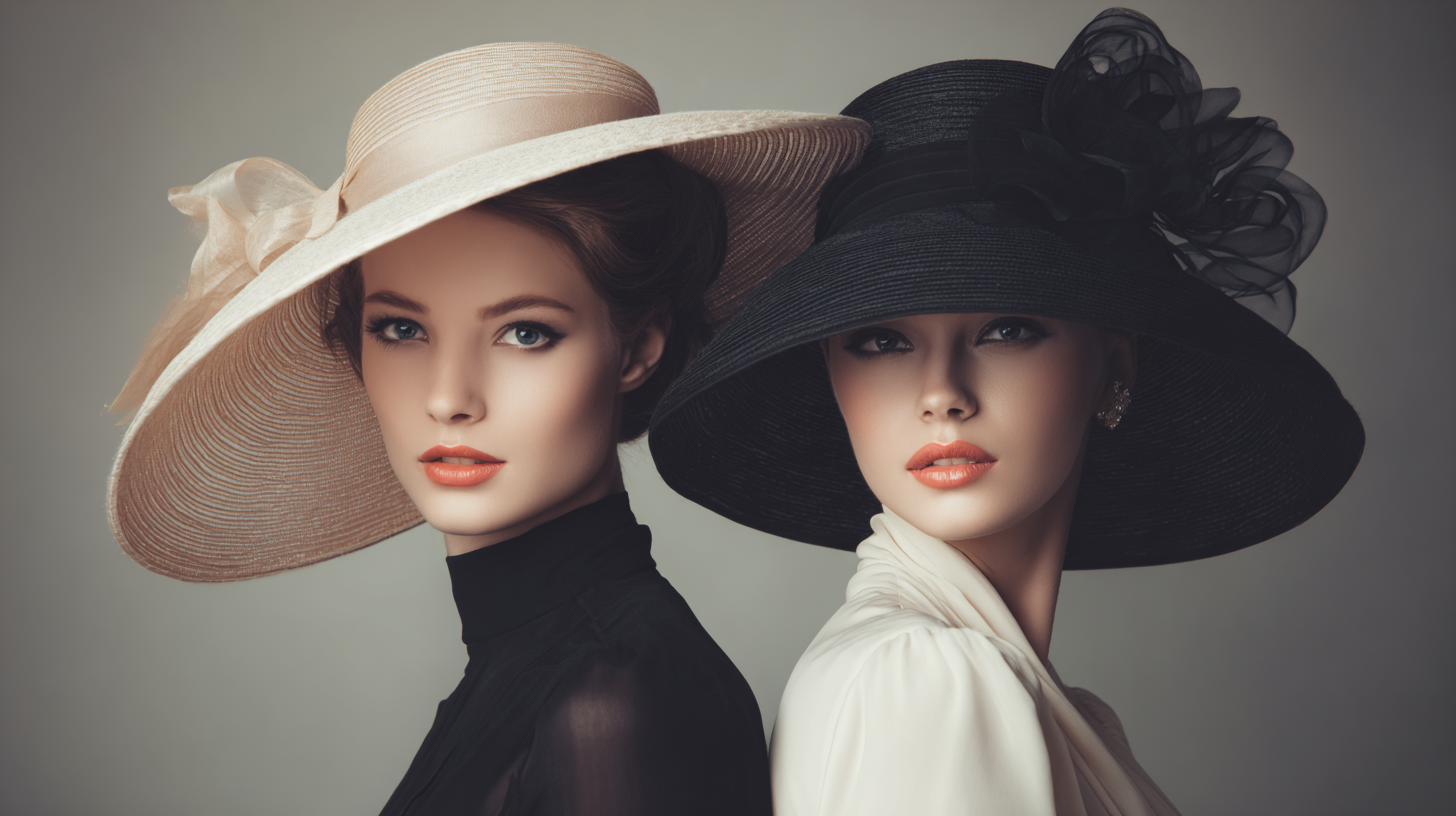How to Choose the Best Fashion Hats: Insights from Market Trends and Sales Data
The global fashion hats market has seen remarkable growth over the past few years, with sales projected to reach over $5 billion by 2025, according to a recent report by Grand View Research. This surge is attributed to evolving fashion trends and an increasing consumer preference for accessories that blend style and functionality. As fashion hats become essential components of modern wardrobes, understanding how to choose the right one has never been more critical. Market insights reveal that diverse styles cater to various demographics, with millennials and Gen Z showing the highest demand for trendy and sustainable options. By analyzing current market trends and sales data, consumers can make informed decisions that not only reflect their personal style but also align with broader industry movements, ensuring they select the best fashion hats for their individual needs.

The Evolution of Fashion Hats: A Look at Historical Trends and Modern Influences
The evolution of fashion hats provides a fascinating insight into the dynamic trends of the industry. Historically, hats transitioned from symbols of social status in the 18th century to essential accessories in modern fashion. As per a recent report by Grand View Research, the global hat market is expected to reach USD 22.6 billion by 2025, reflecting a growing appreciation for headwear across diverse demographics. Today’s millennial and Gen Z consumers seek uniqueness and sustainability, greatly influencing hat styles and materials.
**Tip:** When selecting a fashion hat, consider the type of materials used. Eco-friendly options like organic cotton or recycled materials not only appeal to environmentally conscious consumers but also align with current market trends.
In addition to material choices, the recurring revival of vintage styles signifies the importance of historical influences in contemporary fashion. For instance, the 90s bucket hat and 70s wide-brim styles have regained popularity thanks to social media platforms showcasing retro aesthetics. According to a Vogue Business report, this resurgence has led to a 70% increase in searches for bucket hats since early 2021.
**Tip:** To stay ahead in your fashion choices, explore local thrift shops for unique vintage hats that can add character to your wardrobe, while also being a sustainable option.
Fashion Hats Trends Over the Years
This chart illustrates the sales volume of fashion hats across different decades, highlighting the evolution in popularity and market trends. The data shows a significant increase in sales volume from the 1920s through the 2020s, indicating a resurgence in interest for fashion hats in contemporary times.
Understanding Consumer Preferences: Analyzing Sales Data in the Hat Market
The hat market has experienced significant shifts in consumer preferences over the past few years, driven by various factors including fashion trends, cultural influences, and practical needs. According to a report by Grand View Research, the global hat market was valued at approximately $25 billion in 2022 and is expected to grow at a compound annual growth rate (CAGR) of 5.2% from 2023 to 2030. This growth trajectory highlights the increasing demand for fashion hats, which are not only accessories but also expressions of personal style and social identity.

Analyzing sales data reveals that certain styles of hats have surged in popularity. For example, wide-brimmed hats have seen a 30% increase in sales, particularly in the summer months, catering to consumers seeking both sun protection and style. Moreover, the rise of athleisure has contributed to the popularity of baseball caps and bucket hats, with reports showing that these categories represented over 40% of hat sales in 2022. Understanding these market trends and consumer behaviors is essential for retailers aiming to meet the evolving demands of hat enthusiasts and fashion-forward shoppers alike.
Key Features to Consider When Selecting Fashion Hats for Different Occasions
When selecting fashion hats for different occasions, it is essential to consider the key features that will enhance your overall look and match the event's vibe. Start with the material; lightweight fabrics like straw are perfect for summer outings, while wool or felt can make a cozy statement during cooler months. The style of the hat should also complement your outfit and the occasion—opt for a wide-brimmed hat for a day at the beach, while a chic fedora might be more suitable for a night out.
**Tip:** Always ensure the hat fits comfortably on your head. A well-fitted hat not only looks better but also feels great. If you’re unsure about the size, most shops offer sizing guides to help you find the perfect fit.
Another crucial aspect to keep in mind is the color and pattern of the hat. Neutral tones are versatile and can be paired with various outfits, while bold colors or unique patterns can serve as a statement piece. When attending formal events, choose a sleek design with minimal embellishments to maintain a polished look.
**Tip:** Consider your hair and makeup when choosing a hat. A hat can enhance your overall appearance, so coordinating with your hairstyle and makeup can create a cohesive and stylish look.

Sustainability in Hat Production: Choosing Eco-Friendly Options for Fashion Forward
As fashion enthusiasts become increasingly conscious of their environmental impact, the demand for sustainable hat production has surged. Eco-friendly options are now at the forefront of fashion trends, with brands adopting innovative materials and practices. From organic cotton to recycled fabrics, the choices available have expanded, allowing consumers to express their style while supporting the planet.
The importance of sustainability in hat production cannot be overstated. Many companies are now prioritizing ethical sourcing and manufacturing processes, ensuring that their products are not only stylish but also aligned with eco-conscious values. By opting for hats made from sustainable materials, fashion-forward individuals can contribute to a healthier planet, making a statement that resonates far beyond mere aesthetics. Embracing these green alternatives opens up a world of possibilities, allowing consumers to select hats that reflect their commitment to the environment while staying on trend.
How to Choose the Best Fashion Hats: Insights from Market Trends and Sales Data - Sustainability in Hat Production: Choosing Eco-Friendly Options for Fashion Forward
| Hat Style | Popularity (%) | Average Price ($) | Eco-Friendly Materials (%) | Sustainability Rating (1-5) |
|---|---|---|---|---|
| Baseball Cap | 30 | 25 | 20 | 3 |
| Fedora | 20 | 50 | 40 | 4 |
| Sun Hat | 25 | 35 | 30 | 4 |
| Beanie | 15 | 20 | 25 | 3 |
| Bucket Hat | 10 | 22 | 35 | 3 |
Global Manufacturing Insights: How Chinese Factories Shape the Hat Industry
The global hat industry is significantly influenced by Chinese manufacturing capabilities, which account for a substantial proportion of worldwide production. By 2032, the global Contract Development and Manufacturing Organization (CDMO) market is projected to reach an impressive $465.24 billion, driven by increasing demand for customized products and efficient supply chains. In particular, the hat sector benefits from China's robust infrastructure and advanced logistics systems, allowing brands to swiftly respond to market trends and consumer preferences.
As we head into 2022, the Chinese logistics market presents vital insights for stakeholders, including private-equity firms and logistics companies. With a projected annual growth rate of 8.5%, the logistics sector enables efficient distribution channels that bolster the hat manufacturing industry. This efficiency not only reduces costs but also enhances the speed at which fashion trends can be translated into customer offerings. As businesses look to capitalize on emerging fashion trends, understanding the dynamics of China's logistics and manufacturing capabilities will be crucial for success in the highly competitive hat market.
